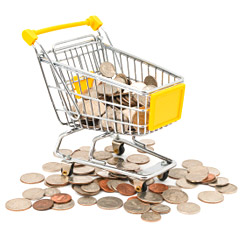We know, we know — you just got done patting yourself on the back over that New York Times graphic showing that healthy food is cheaper than fast food. If you were operating on a really tight budget, we're sure you'd be able to pull off super-wholesome eating for your whole family! Here's the thing, though: For most actual poor people, it's not that simple.
A Seattle nonprofit surveyed more than 200 low-income women and found that they know how to cook healthy food — they just lack access. It's not only about how much an individual meal costs, but about having a grocery store in your area, the time and transportation to shop there, and the time to cook. And it's certainly not just about how much food costs at Mark Bittman's neighborhood store — several studies (here's one) have shown that the poor pay more for groceries.
Surveyors asked women to prioritize public transportation; a healthy, energy-efficient home; green jobs; and access to healthy foods.
By a 2-to-1 margin, the women said their top priority was healthy food. They said the high cost of fresh and organic fruit and vegetables and the lack of grocery stores made feeding their family a healthier diet too hard.
"What we learned from women is that, despite the press that we're seeing, their barrier to switching themselves and their children (to a healthier diet) is not education," said Kristyn Joy, operations director for Got Green.
If we really want to improve nutrition across the board, just telling people that cooking healthy can be cheaper isn't going to do it. We also have to improve accessibility.


